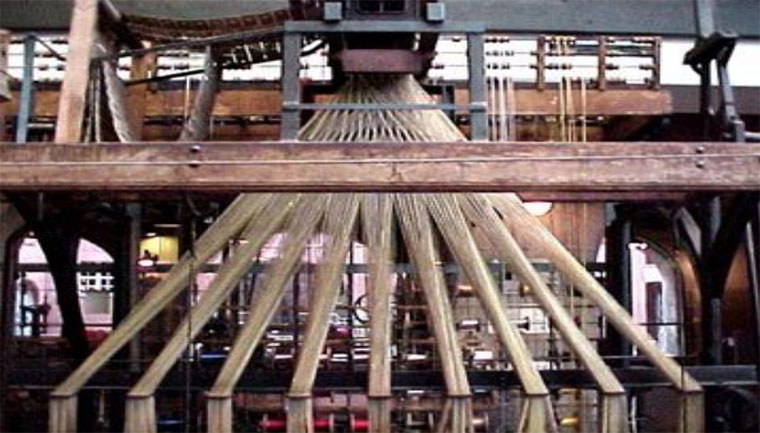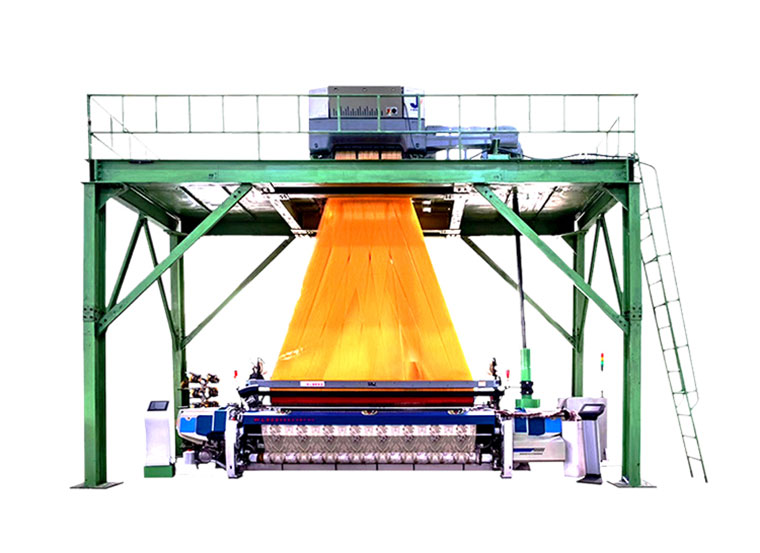The Jacquard system, invented by Frenchman Joseph Marie Jacquard and initial demonstrated in 1801, simplified the method which complex fabrics such as damask were woven. The device entailed the use of countless punch cards tied with each other. Each row of punched holes corresponded to a row of a fabric pattern. This alteration not only presented higher effectiveness to the weaving process, enabling the weaver to generate materials with patterns of practically unrestricted size and also intricacy, yet likewise influenced the future development of computing modern technology.
Jacquard looms are recorded as being made use of in the Scottish textile sector from the 1820s. It is believed that they were functional in Angus, Kincardineshire and also Paisley for serape production and Dunfermline for damask weaving.

In 1793, with the French Revolution well underway, Jacquard took part in the unsuccessful protection of Lyon against the troops of the Convention. Afterward, he offered in their ranks on the Rhóne and also Loire. After seeing some active duty, in which his young kid was obliterated at his side, Jacquard again returned to Lyon.
Back in Lyon, Jacquard was employed in a factory and also utilized his spare time in constructing his improved impend. In 1801, he showed his development at the commercial exhibit at Paris, as well as in 1803 he was mobilized to Paris to benefit the Conservatoire des Arts et Métiers. A loom by Jacques de Vaucanson (1709-1782), transferred there, suggested different renovations in his very own, which he slowly refined to its last state.
Joseph Marie Jacquard's invention was an add-on that sat on top of a loom. A series of cards with openings punched in them would revolve through the gadget. Each hole in the card corresponded with a certain hook on the impend, which functioned as a command to increase or reduce the hook. The setting of the hook dictated the pattern of elevated as well as lowered strings, enabling textiles to repeat complicated patterns with excellent rate and also accuracy.
The invention was fiercely opposed by the silk-weavers, that feared that its intro, owing to the saving of labor, would certainly deny them of their income. However, the impend’s benefits safeguarded its basic fostering, and also by 1812 there were 11,000 looms in operation in France. The loom was stated public residential or commercial property in 1806, as well as Jacquard was awarded with a pension and a nobility on each device.This specific loom was used by two weavers from Stonehouse in Lanarkshire, siblings Robert as well as James Hamilton. Weaving belonged to common life for numerous families in Scotland, and also was a significant home industry in Stonehouse for over 200 years. Nevertheless, as the enhanced automation of looms during the 20th century lowered the requirement for human input, the sector came to be outdated as well as had died out altogether by the 1940s.

The term “Jacquard loom” is a misnomer. It is the “Jacquard head” that adapts to a great many dobby looms such as the “Dornier” brand that allow the weaving machine to then create the intricate patterns.
Jacquard looms, whilst relatively common in the textile industry, are not as ubiquitous as dobby looms which are usually faster and much cheaper to operate. However unlike jacquard looms they are not capable of producing so many different weaves from one warp. Modern jacquard looms are computer controlled and can have thousands of hooks. And inevitably, unlike Jacquard’s original invention there is now no need for the use of punched cards instead the patterns are literally computer controlled.




